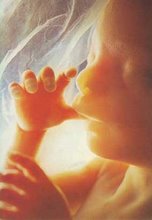The technology of containerized shipping where steel boxes of a standard size and shape could be loaded from ship to truck or railroad car took hold during the Vietnam War era. These container boxes became the norm for moving goods throughout the world. They helped drive the expansion of cheap consumer goods brought to the United States from Asia.
The sea/land containers, made with 14-gauge steel (1/10 inch), were also called intermodal or ConEx boxes.
Martin Container company, the oldest and largest such company on the West Coast, was located near the Long Beach and Los Angeles harbors. In the mid 1970s, Nick Martin, the company owner, began to expand beyond the use for shipping and decided to market the sturdy boxes as storage units.
In 1980 Malvin Weisberg needed to store the growing number of aborted baby bodies he was accumulating at his laboratory in Santa Monica. The number of bodies would eventually total over 16 thousand. Weisberg ordered a standard Martin container (20’x8’x8’) to be delivered to his Woodland Hills home. The container was kept in back of Weisberg’s house, next to his tennis courts.
Weisberg’s first check in 1980 to Martin for $1700 bounced, and he missed subsequent payments. Finally on February 4, 1982 Martin sent a truck and driver to Woodland Hills to re-possess the container. The truck included a rig to slide the box up on rails with a winch. However the container packed nearly full with bodies broke the winch.
To make things worse, the driver was attacked by a dog, was bitten, and had to call animal control.
All of this increased Nick Martin’s aggravation.
Reached by the driver, Martin told him to wait and called a company with a large crane to go back up the narrow driveway.
The second truck with the crane lifted the container up, deposited it on the original Martin truck, and the container was brought back to from Woodland Hills to the Martin yard in Wilmington.
A day or two later, Martin employees Hank Stolk and Ron Gillette went to empty out the steel box.
Stolk said he thought it was like a war zone; formaldehyde and bodies spilled out of plastic buckets.
Gillette, according to a later Cal Thomas story, spoke of seeing “hands torn right off” and of “grown men weeping and vomiting.” Later when reporters arrived, Gillette said, “You stand there and stare at a ripped-apart baby for 15 minutes like I did. You stand there and count the fingers and look at legs with little kneecaps that have been tore off the body. You stand there and try to find the head, only to realize there ain’t no head. You do that just like I did. And then you tell me how you feel.”
The Martin container staff called police and then the health department. The medical-legal section of the Los Angeles County district attorney’s office got the container with the contents transferred to a lot next to an LA county building. The paperwork from the container went to a portable office structure on the lot to be analyzed. The bodies were moved to a semi trailer.
After the contents had been transferred to the county, the Martin Container company tried to give the container to a Little League in the Los Angeles area, The Little Leaguers rejected it, because it “smelled bad.”
Past and future topics in this series on California Catholic Daily:
16,433 aborted unborn babies found in San Fernando Valley
What the coroner’s office did (next week)
The Inglewood Women’s Hospital
Gloria Allred attempts to prevent burial
Mothers’ and abortionists’ names on bodies
How Odd Fellows Cemetery chosen for burial
Future Chief Justice Roberts actions regarding Reagan letter
Clergy participation in burial service
Conrad cartoon in LA Times
-->
Were there to be no support in the whole history of ethical and moral thought, were there no acknowledged confirmation from medical science, were the history of legal opinion to the contrary, we would still have to conclude on the basis of God's Holy Word that the unborn child is a person in the sight of God. He is protected by the sanctity of life graciously given to each individual by the Creator, Who alone places His image upon man and grants them any right to life which they have.
Monday, December 10, 2012
Evidence of the American Holocaust, part 3 The container
via cal-catholic.com



